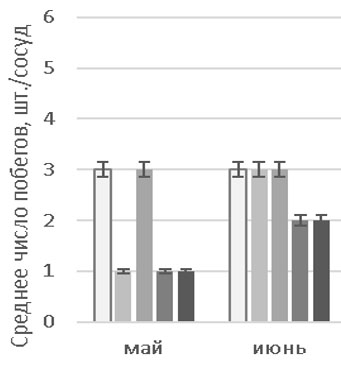Adaptation potential of Miscanthus in a solonetz agricultural landscape
DOI:
https://doi.org/10.31251/pos.v7i2.247Keywords:
Miscanthus; salt tolerance; solonetz soils; biomass; mineral nutrition elements.Abstract
The aim of the study was to assess the ecological adaptability of Miscanthus cv. Soranovsky to saline agricultural landscapes and the phytomeliorative effect of the plant on saline soils.
Location and time of the study. The field experimental part of the research was carried out in 2018-2020 in the central forest-steppe in the Barabinsky agrolandscape region (Experimental Research Station of the Siberian Federal Center for Agrobiotechnologies).
Methods. The common methods of field and vegetation experiments, chemical analysis of soils and plant samples were used in the study.
Results. Miscanthus can grow on solonetzic soils, providing a biomass yield of up to 5 t/ha under dry growing season conditions. The removal of nutrients from the soil by the biomass of Miscanthus stems was found to be low (8.2 kg/ha of nitrogen, 1.4 kg/ha of phosphorus and 9.7 kg/ha of potassium per year) due to their annual reutilization into rhizomes. This fact allow to avoid the danger of soil depletion during long-term cultivation of crops. Growing Miscanthus on meadow-chernozem solonetz for an average of three years led to changes in soil properties such as a decrease in pH, and changes in salts chemistry in the soil solution, manifested as a decrease in sodium bicarbonate content.
Conclusions. Miscanthus as a crop has wide adaptation capabilities in relation to the marginal lands of the solonetz zone of West Siberia. Miscanthus plantings have a beneficial environment-forming effect on solonetz soils, due to the enrichment of soils with mineral nutrition elements and improvement of soil chemical properties.
Downloads

Downloads
Published
How to Cite
Issue
Section
License
Copyright (c) 2024 The Journal of Soils and Environment

This work is licensed under a Creative Commons Attribution 4.0 International License.






